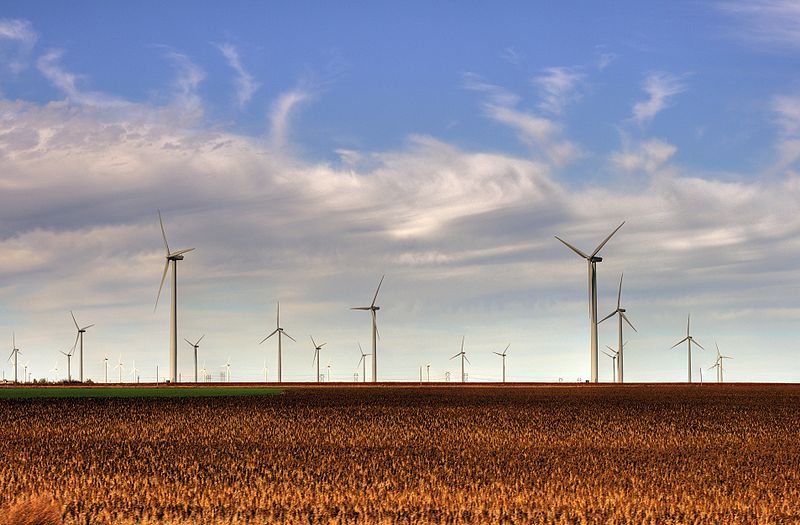
The Pittsburgh Tribune-Review criticized the renewal of federal tax credits for wind energy, claiming the credits “would blatantly waste taxpayer dollars on a manifestly unsustainable industry that's wholly dependent on government subsidies.” However, other energy industries also receive billions of dollars in federal subsidies and tax breaks to keep them competitive, which the editorial did not mention.
In a May 13 editorial the Tribune-Review noted that the Senate Finance Committee recently approved a two-year renewal for wind energy projects, slated to cost $13 billion over 10 years. It called the renewal a “waste” of taxpayer dollars and advocated for “more reliable coal and nuclear plants” to meet electricity demand:
The last renewal, for 2013, allowed tax credits for projects under construction. The credits previously applied only to finished projects. American Wind Energy Association figures show installations rose sharply as 2012 ended and spiked again in 2013's fourth quarter as the industry took advantage of that change. It all prompted Erika Johnsen to write for the website Hot Air: “Could the wind industry's utter dependence on ... taxpayer help ... be any more apparent?”
There are better uses for taxpayer dollars than subsidizing wind energy, which “undercuts” more reliable coal and nuclear plants that are critical for meeting electricity demand, Sen. Lamar Alexander, R-Tenn., writes in The Wall Street Journal.
The example provided in the editorial of the spiking number of wind installations shows an industry attempting to increase production in a climate of uncertainty, something the fossil fuel industry does not have to contend with. As DBL Investors pointed out in a 2011 paper on the differences in subsidies different energy sources receive, unlike many other energy incentives, specifically for the oil and gas industry, which are permanently in the tax code, wind energy support has been allowed to expire several times since the creation of wind's primary incentive in 1992:
Some energy incentives, like the depletion allowance for oil and gas, are permanent in the tax code. Wind energy's primary incentive, the PTC, has been allowed to expire multiple times since its creation in 1992, and has been consistently reinstated for only one or two year terms.
Due to the series of shorter-term, 1-to-2-year PTC extensions, growing demand for wind power has been compressed into tight and frenzied windows of development. This has led to boom and bust cycles in renewable energy development, under-investment in manufacturing capacity in the U.S., and variable in equipment and supply costs. Recent work at Lawrence Berkeley National Lab suggests that this boom-and-bust cycle has made the PTC less effective in stimulating low-cost wind development than might be the case if a longer term and more stable policy were established.
In addition, the Tribune-Review conveniently left out the billions of dollars given to prop up the oil, gas and coal industries nationally and worldwide. According to a fact sheet by Oil Change International, the United States subsidizes fossil fuels anywhere between $14 billion and $52 billion annually. Internationally, fossil fuels received $480 billion in 2011 or 0.7 percent of global GDP or 2 percent of total government revenues according to the International Monetary Fund. Meanwhile, in 2011, the International Energy Agency found that renewable energy sources received only about $66 billion internationally.
Although the Tribune-Review chose not to mention them, the coal industry specifically receives large taxpayer-funded subsidies for mining leases on public lands, tax breaks for exploration, development and other investment costs, and access to subsidized railroads. Yet even with all the subsidies, the coal industry has seen its cost per unit of energy rise, making it less competitive with renewable energy sources such as wind energy, which has gone down in cost for each unit of energy it produces.